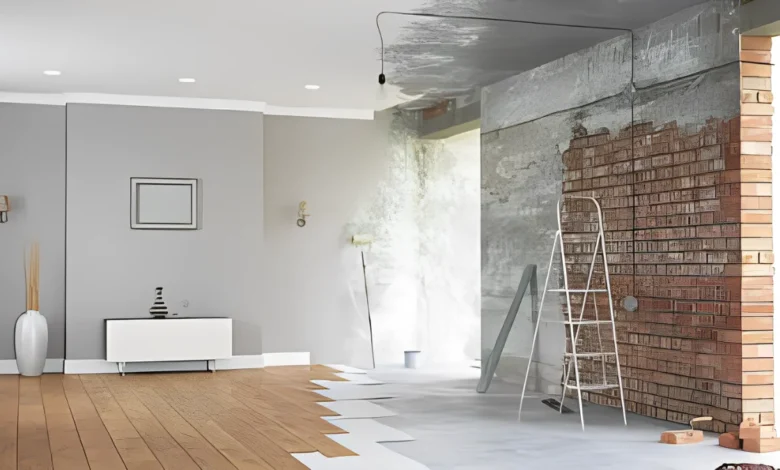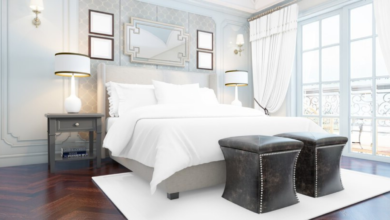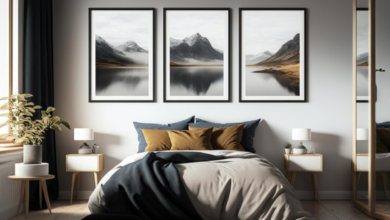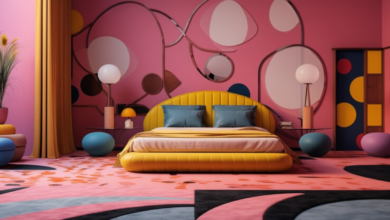Room Design Tool: Transform Your Space Creatively

Introduction to Room Design Tool
When it comes to designing our living spaces, we all want to create a space that reflects our personality, maximizes functionality, and exudes comfort. However, sometimes it can be challenging to visualize how different design choices will come together in our room. This is where room-design tools come to the rescue. In this blog post, we will explore the concept of room design tools, their functionality, benefits, limitations, and some practical tips for using them effectively. So let’s dive in and discover how these tools can transform your space creatively.
Understanding the Concept of Room Design Tools
Room design tools are digital applications or software that allow you to virtually design and visualize your space. These tools provide you with the tools and features to experiment with different layouts, color schemes, furniture arrangements, and more, all from the comfort of your computer or smartphone. With the help of digital 3D modeling and realistic rendering, you can get a sense of how your room will look before making any physical changes.
How Room Design Tools Simplify Interior Design Projects
Gone are the days of measuring and sketching by hand. Room design tools simplify the entire interior design process by providing pre-made templates and drag-and-drop functionalities. They eliminate the need for complicated calculations and manual drawings, making them accessible to individuals with limited design experience. These tools offer an intuitive interface that allows you to easily navigate and experiment with various design elements, resulting in a more streamlined and efficient design process.
Advantages of Using Room Design Tools for Space Transformation
The advantages of using room design tools for space transformation are plentiful. Firstly, you have the flexibility to try out different design options and visualize how they will look in your room. This helps you make informed decisions without the need for costly and time-consuming trial and error. Secondly, these tools enable you to experiment with ideas that might have been difficult to execute in reality. You can take design risks and explore unconventional layouts or color palettes without the fear of irreversible mistakes. Lastly, room design tools promote collaboration and sharing. You can seek feedback from friends, family, or even professional designers, allowing you to refine your ideas and gain valuable insights.
Exploring the Functionality of Room Design Tools
Room design tools offer a wide range of functionalities that can help you transform your space in a creative and personalized way. Let’s explore how these tools can assist you in different aspects of interior design.
Visual Different Layouts with Room Design Tools
Customizing Furniture Arrangements for Optimal Space Utilization
With room design tools, you can experiment with different furniture arrangements, ensuring each piece fits perfectly in your space. You can easily drag and drop furniture items and see how they fit within the dimensions of your room. This helps you maximize space utilization and create a layout that is both functional and aesthetically pleasing.
Experimenting with Various Flooring and Wall Options
Room design tools allow you to visualize different flooring and wall options, helping you make well-informed choices. From hardwood floors to ceramic tiles, and from neutral paint colors to bold wallpaper designs, you can try out various combinations to find the perfect match for your room.
Incorporating natural and artificial lighting effects
Lighting plays a crucial role in creating the ambiance of a room. With room design tools, you can experiment with different lighting effects, including natural sunlight and artificial fixtures. By adjusting the intensity, direction, and color temperature of the light, you can create different moods and atmospheres within your space.
Experimenting with Color Schemes and Themes
- Choosing Harmonious Color Combinations for Enhanced Ambiance
- Color is one of the most powerful design elements. Room design tools allow you to experiment with different color schemes, helping you choose harmonious combinations that enhance the overall ambiance of your space. From muted tones to vibrant hues, you can explore a wide range of palettes to find the perfect fit for your room.
- Exploring Different Themes to Convey Personal Style
- Do you want a modern, minimalist look or a cozy, bohemian vibe? Room design tools enable you to explore different design themes and styles, helping you convey your personal style within your space. From Scandinavian simplicity to industrial chic, the possibilities are endless.
- Creating Focal Points and Accent Walls for Visual Interest
- Room design tools allow you to experiment with creating focal points and accent walls. You can play with different textures, patterns, and colors to add visual interest and create a statement piece within your room. By strategically placing furniture or artwork, you can draw attention to specific areas and make your space more dynamic.
Accessorizing and Beautifying with Room Design Tools
- Selecting and Placing Decorative Items and Artwork
- Room design tools provide a vast catalog of decorative items and artwork that you can choose from. By experimenting with different placements and arrangements, you can find the perfect balance between functionality and aesthetics. These tools allow you to see how each item complements the overall design and help you avoid overcrowding or mismatching.
- Incorporating Plants and Greenery for a Fresh Vibe
- Greenery has become a popular trend in interior design. With room design tools, you can explore different plant options and see how they transform the atmosphere of your room. From large potted plants to hanging terrariums, you can experiment with different placements and arrangements to create a fresh and inviting vibe.
- Exploring window treatments and curtains to enhance privacy
- Privacy is essential in any living space, and treatments play a crucial role in achieving it. Room design tools allow you to choose and visualize different types of curtains, blinds, or shades, helping you find the perfect balance between privacy, natural light, and aesthetics. You can adjust the height, width, and style of the window treatments to see how they enhance your room’s overall appearance.
Benefits and Limitations of Room Design Tools
While room design tools offer numerous benefits, it’s important to consider their limitations as well. Let’s explore both sides to have a balanced understanding of what these tools can and cannot do.
Advantages of Using Room Design Tools for Homeowners
- Cost and Time Savings in Designing and Redesigning Spaces
- By using room design tools, homeowners can save both time and money. Instead of making costly design mistakes, you can experiment virtually and refine your ideas before making any physical changes. This eliminates the need for time-consuming and expensive trial-and-error approaches.
- Increased Confidence and Satisfaction with Design Choices
- Room design tools empower homeowners to make confident design choices. By visualizing different options and exploring various possibilities, you can choose the design elements that truly resonate with your personal style. The result is a space that you are proud of and that brings you satisfaction every time you walk in.
- Collaboration and Sharing Options for Feedback and Inspiration
- Room design tools offer collaboration and sharing options that allow you to seek feedback and inspiration from others. Whether it’s showing your design ideas to friends and family or discussing your vision with professional designers, these tools facilitate communication and help you refine your design choices through valuable input.
Limitations to Consider When Using Room Design Tools
- Accuracy Constraints and Limitations in Real-Life Execution
- While room design tools provide accurate virtual representations, there may be constraints and limitations when it comes to real-life execution. For example, the lighting conditions in your room might affect the actual appearance of colors and textures. Additionally, structural constraints or existing architectural elements might limit the feasibility of certain design choices.
- Potential Exposure to Limited Design Options or Templates
- Room design tools often provide a range of design options and templates to choose from. However, this might limit your creativity and originality, as you are working within predefined boundaries. While the customization options are extensive, it’s important to acknowledge that there are limitations to the design freedom these tools offer.
- Considerations for Non-Visual Elements Such as Texture and Smell
- Room design tools primarily focus on the visual aspects of design. However, there are elements like texture and smell that contribute to the overall sensory experience of a room. It’s important to consider these non-visual elements when designing your space and recognize that room design tools might not fully capture their impact.
Overcoming Limitations and Maximizing Room Design Tool Potential
- Supplementing Room Design Tools with Physical Samples and Swatches
- To overcome the limitations of room design tools, you can supplement them with physical samples and swatches. By seeing and feeling the actual materials, you can make more informed decisions about textures, colors, and finishes. This tactile experience adds an extra layer of authenticity to your design process.
- Seeking Professional Advice for a Balanced Approach
- Room design tools are a great tool for homeowners, but seeking professional advice can provide a balanced approach to your design. Interior designers have expertise in understanding space, functionality, and aesthetics and can offer insights and personalized recommendations that room design tools might not provide.
- Incorporating elements of user feedback for continuous improvement
- Room design tools are constantly evolving, and user feedback plays a crucial role in their improvement. By actively participating in forums, sharing your experience, and providing feedback to the tool developers, you contribute to making these tools even more efficient and user-friendly.
Practical Tips and Inspirations for Using Room Design Tools
Now that we have explored the functionality, benefits, and limitations of room design tools, let’s dive into some practical tips and inspirations for using them effectively.
Harnessing Room Design Tools for Small Spaces
- Tips for Maximizing Storage and Utilizing Vertical Space
- In small spaces, every inch counts. Room design tools can help you optimize storage solutions and utilize vertical space effectively. By experimenting with different furniture options and storage configurations, you can find creative ways to make the most of your limited square footage.
- Creating Illusions of Space Through Color and Lighting
- Colors and lighting can create illusions of space and openness. Room design tools allow you to experiment with light colors, mirrors, and strategic lighting to make your small room appear larger than it actually is. These techniques can help you create a sense of airiness and spaciousness in compact areas.
- Multi-functional furniture options to optimize small areas
- Multi-functional furniture is a game-changer when it comes to small spaces. With room design tools, you can explore different multi-purpose furniture options, such as sofa beds, storage ottomans, or wall-mounted desks. These versatile pieces help you maximize functionality while saving space.
Room Design Tools for Different Design Aesthetics
- Incorporating Modern and Minimalist Elements
- If you are drawn to clean lines and simplicity, room design tools can help you achieve a modern and minimalist aesthetic. Experiment with sleek furniture, neutral colors, and clutter-free spaces to create a calming and sophisticated atmosphere.
- Embracing Traditional and Timeless Designs
- Room design tools are not limited to modern aesthetics. They can also assist you in creating traditional and timeless designs. Incorporate classic furniture pieces, rich colors, and ornamental elements to bring elegance and warmth to your space.
- Exploring Eclectic and Bohemian Decor Styles
- For those who love unique and eclectic designs, room design tools allow you to explore bohemian-inspired decor. Mix patterns, textures, and colors to create a vibrant and eclectic space that reflects your personality and adventurous spirit.
Room Design Tools for Specific Rooms and Purposes
- Designing Functional and Stylish Kitchens with Room Design Tools
- Kitchens are often the heart of the home, and room design tools can help you create a functional and stylish space. Experiment with different layouts, cabinet configurations, and appliance placements to find the perfect balance between efficiency and aesthetics.
- Creating Serene and Relaxing Bedroom Retreats with Ease
- Bedrooms should be a sanctuary for relaxation and rejuvenation. With room design tools, you can experiment with different bedding options, wall colors, and lighting to create a serene and cozy retreat that promotes restful sleep and tranquility.
- Styling, Inviting, and Welcoming Living Rooms Using Virtual Tools
- Living rooms are the social hub of a home, and room design tools can help you create an inviting and welcoming space. Experiment with different seating arrangements, art placements, and lighting to create a cozy and comfortable ambiance that encourages conversation and relaxation.
Summary to Room Design Tool
In conclusion, room design tools are powerful assets that can help you transform your space creatively. They provide an opportunity to visualize different layouts, colors, and styles before making any physical changes. Despite their limitations, the benefits of using room design tools for homeowners are significant, including cost and time savings, increased confidence in design choices, and collaboration options for feedback. By supplementing these tools with physical samples and seeking professional advice, you can overcome their limitations and maximize their potential. Whether you are looking to optimize a small space, explore different design aesthetics, or design specific rooms, room design tools offer endless opportunities to tap into your creative potential and create a space that truly reflects your personality and style.
FAQs to Room Design Tool
- Are room design tools suitable for individuals with limited design experience?
- Absolutely! Room design tools are user-friendly and designed to assist individuals with limited design experience. They provide intuitive interfaces, pre-made templates, and drag-and-drop functionalities, making the design process accessible to everyone.
- Can room design tools be used for commercial design projects?
- While room design tools are primarily aimed at homeowners, they can be used for commercial design projects as well. However, it’s important to consider the specific needs and requirements of commercial spaces and consult with professional designers for more complex projects.
- How accurate are room design tools in terms of scale and measurements?
- Room design tools aim to provide accurate representations of scale and measurements. However, it’s important to keep in mind that real-life execution might have certain constraints or variations. It’s recommended to always double-check dimensions and consult with professionals to ensure accurate measurements.
- Are there room design tools that provide virtual reality experiences?
- Yes, there are room design tools that offer virtual reality experiences. These tools allow you to immerse yourself in a virtual representation of your space and navigate through it as if you were physically present. Virtual reality adds an extra level of realism and depth to the design process.
- Can I use room design tools to experiment with different architectural styles?
- Absolutely! Room design tools provide the flexibility to experiment with different architectural styles. Whether you want to explore contemporary designs, traditional aesthetics, or futuristic concepts, these tools allow you to mix and match elements to create a unique style that suits your preferences.



